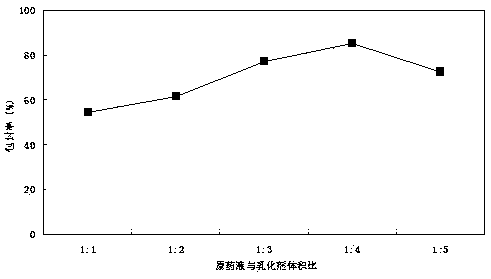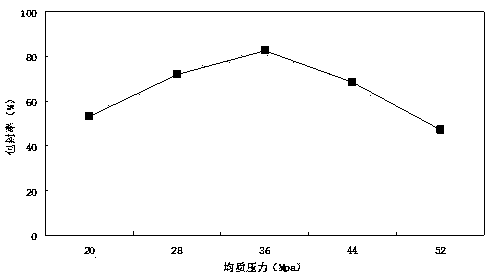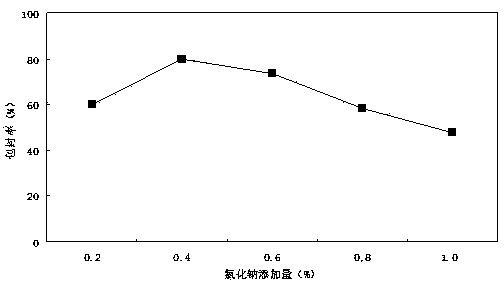Insecticide nanocapsule for preventing and controlling fruit tree insect pests and preparation process thereof
A nanocapsule and preparation technology, applied in the direction of insecticides, biocides, animal repellents, etc., can solve the restrictions on promotion and popularization of biological insecticides, low content of insecticidal active ingredients, and low efficiency of insecticide use High-level problems, to achieve good insecticidal control effect, improve effective utilization rate, and reduce the effect of spraying amount
- Summary
- Abstract
- Description
- Claims
- Application Information
AI Technical Summary
Problems solved by technology
Method used
Image
Examples
Embodiment 1
[0040] An insecticide nanocapsule for preventing and controlling fruit tree pests, its active ingredients are spinosad and ginkgo extract, and the contents in the whole insecticide nanocapsule are 3% of spinosad and 15% of ginkgo extract %.
[0041] The preparation technology of this insecticide nanocapsule, comprises the steps:
[0042] (1) Pretreatment of plant raw materials: wash the whole ginkgo herb and place it in a blast drying oven, dry it completely at 50-60°C, then crush it with a freezer grinder, pass it through a 60-mesh sieve, and make raw material dry powder; Weigh the raw material dry powder, add it into deionized water according to the ratio of material to liquid of 1:20, and treat it with 480W microwave for 2~3min;
[0043] (2) Extraction of active ingredients: using supercritical CO 2 Extraction, weigh the pretreated ginkgo raw material dry powder, add an appropriate amount of absolute ethanol, stir evenly, add it to the extraction kettle, seal it and pass ...
Embodiment 2
[0048] Embodiment 2: the optimization experiment of preparation process
[0049] 2.1 The effect of the mass ratio of the original drug solution and the emulsifier on the encapsulation efficiency
[0050] The original drug solution and the emulsifier were mixed uniformly according to the mass ratio of 1:1, 1:2, 1:3, 1:4, 1:5, and other operations were the same as in Example 1 to prepare nanocapsules respectively and measure the encapsulation Rate. Encapsulation efficiency (%) = sum of the mass of each component of the original drug in the nanocapsule / sum of the actual input mass of the original drug × 100%.
[0051] Such as figure 1 As shown, when the mass ratio of the original drug solution to the emulsifier changed from 1:1 to 1:5, that is, when the amount of the emulsifier gradually increased, the encapsulation efficiency first increased and then decreased. When the original drug solution and the emulsifier When the volume ratio is 1:4, the encapsulation efficiency is the...
Embodiment 3
[0067] Embodiment 3: the particle size test of insecticide nanocapsule
[0068] Adopt laser particle size analyzer to carry out particle size test to the insecticide nanocapsule prepared in embodiment 1, repeat test 5 times, the result is as follows Figure 7 shown. It can be seen from the figure that the particle size of the nanocapsules is in the range of 100-300nm, and the polydispersity index PDI is in the range of 0.18-0.24, indicating that the prepared nanocapsule system has good monodispersity.
PUM
 Login to View More
Login to View More Abstract
Description
Claims
Application Information
 Login to View More
Login to View More - R&D
- Intellectual Property
- Life Sciences
- Materials
- Tech Scout
- Unparalleled Data Quality
- Higher Quality Content
- 60% Fewer Hallucinations
Browse by: Latest US Patents, China's latest patents, Technical Efficacy Thesaurus, Application Domain, Technology Topic, Popular Technical Reports.
© 2025 PatSnap. All rights reserved.Legal|Privacy policy|Modern Slavery Act Transparency Statement|Sitemap|About US| Contact US: help@patsnap.com



